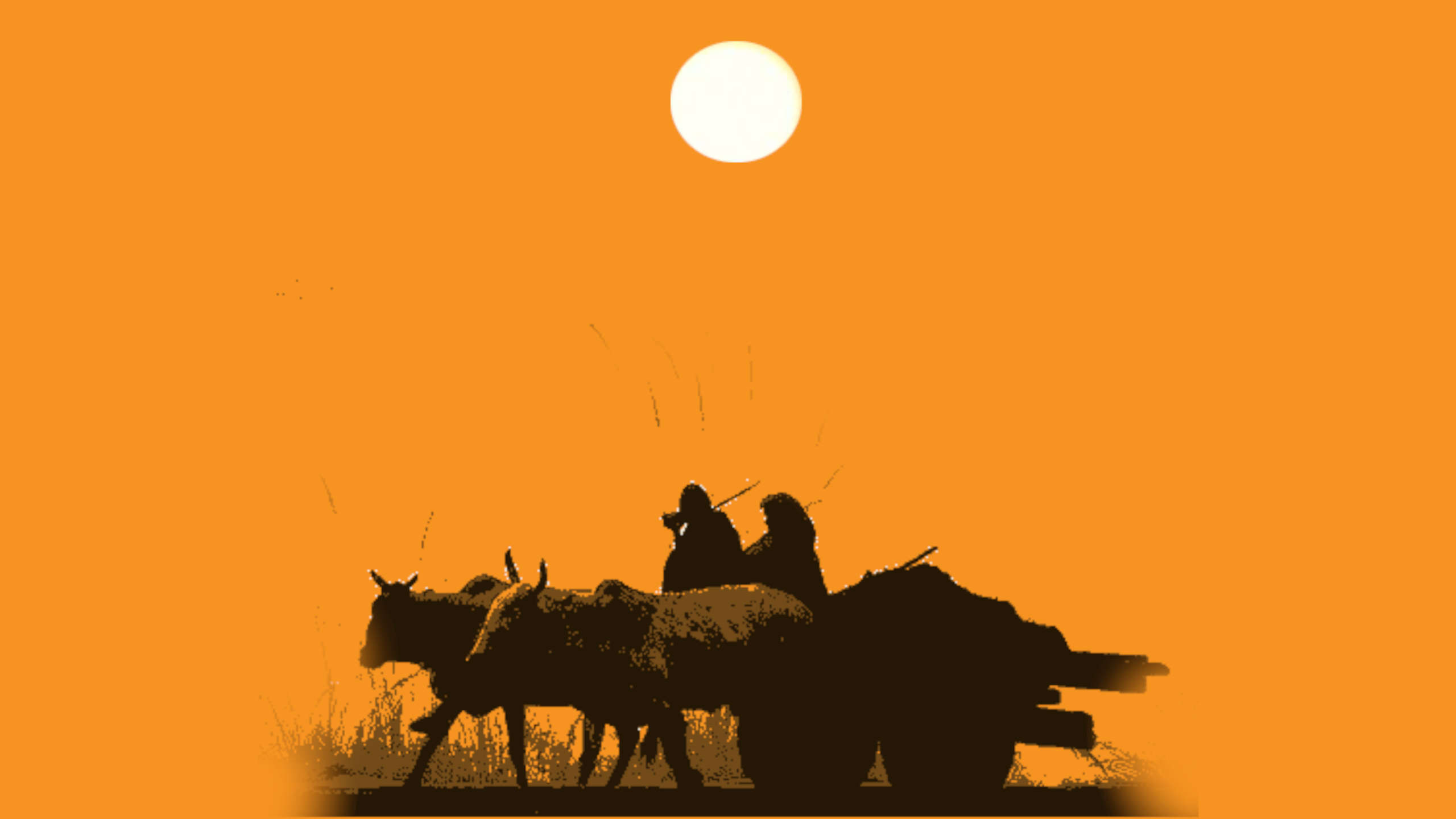Indian Civilisation has always looked upon the farmers as annadata and carrier of the wisdom of thousands of years. We have been a ‘Krishi-pradhan’ nation. But since, the British arrived there have been policies to force farmers to quit farming. One of the biggest challenges that we face as a nation today.
By Rohit Parakh, Agriculture and Food Policy Analyst
A Bharatiya farmer does more than just farm the land. He/she is the carrier of wisdom and tradition associated with our farms, lands and rural traditions.
In the book, Annam Bahu Kurvita (which translates to ensuring an abundance of anna) which is a Taittiriyopanishad sruti, Sri Jitendra Bajaj and Sri Mandayam Doddamane Srinivas have drawn primarily from Sriramayana and Srimahabharata recollecting Indian traditions of abundance and sharing of food. In the book, they have highlighted the glorious heights of our food culture and touching on its decline.
India comes from a tradition where the farmer is looked as an annadata with annadata sukhibhava (a prayer to the well-being and happiness to all those involved in ensuring the consumption of food) a prime mantra prevalent in the society. A farmer even in today’s day and age evokes a popular feeling of gratitude in large sections of the society.
In farming in India, we still see the continuation of her traditions; for instance, in Kandhamal in Odisha, where the Burlang yatra (seed festival) has recently revived an age-old practice of seed conservation. The “Burlang Yatra starts with women farmers carrying seeds kept inside specially painted pots on their heads arriving at the host village in a procession that is then followed by worship of seeds with the traditional lighting of diyas. This is followed by a collective exhibition of seeds, and then an exchange of seeds taking place between the farmers.
Celebratory traditional music and dancing by men and women farmers from both the host and the visiting communities accompany the event.” The farmers also exchange recipes of various dishes there too and revival of the yatra has helped in millet cultivation revival in the communities too. Countless such seed festivals used to take place across the length and breadth of the nation and are indeed being revived in India. The seed exchange rituals combine the need for seed exchange grounded in self-sufficiency in culturally-aligned practices oriented to the higher.
Similarly with India being a ‘krishi-pradhan’ nation, many festivals in India have significant associations with crop harvest dates. Whether it be Lohri, Baisakhi, Gudi Padwa, Bihu, Onam or Pongal – all of them are harvest festivals.
Harela, for instance – a festival from Kumaon region of Uttarakhand, is celebrated by the farming communities on the 1st day of sawan where Lord Shiva and Parvati are worshipped. 5-7 crops are sown 10 days before the due date and kept in a basket where they are harvested on the date of Harela. The crop harvest and size is taken as an indicator of prosperity and also serves to conserve local germplasm and biodiversity of native varieties as well.
Farmers and their food produce is what has helped the civilization to flourish for thousands of years. The farmers by their very profession are embedded in the community that they live in. The various activities performed in farming whether it be tilling, sowing, harvesting, weeding, manuring/spraying, winnowing, threshing and processing collectively have formed the bedrock of Indian society and economy for millennia. It should come as no surprise that much in folklore, festivals, music, art, indeed overall culture and economy has evolved around these. Whilst the nature of these have changed in many parts of the country in recent decades with the introduction of chemical fertilizers, synthetic pesticides, hybrid seeds, machinery taking the corresponding economy out of farms and villages – a silent farmers movement to revive our farming practices is indeed taking place.
Often a farmer is not a full-time farmer. A farmer whilst being a farmer often performs other professions too. This is in major part because of a necessity too. An average farmer earns monthly nearly Rs 3140 around the country from cultivation activities, with median net cultivation income in 17 states less than Rs 1700 per month. Taking other income sources into account – the income comes to Rs 8931, with labour wage providing for another Rs 3,025 in what is an indicator of our lop-sided priorities.
This is arguably Indian farming’s biggest challenge, i.e. policies directed to ensure more and more farmers quit agriculture – one that started during British rule (critiqued very well in Royal Commission on Labour in India report from 1931’s summary, ‘The Indian Peasant Uprooted’) and one which has been seen in the last 3 decades as well. These policies have also led the younger generations to be lesser and lesser interested in farming. These seem to be meeting their intended target following the trajectory of Western countries with India’s census data from 1991 to 2011 showing a reduction in full-time cultivators in India reducing from 11.8 crores to 9.5 crores. The same time period also shows a staggering corresponding near doubling in the number of agricultural labour from 7.4 crores to 14.4 crores.
Hopefully in the times to come, we shall soon be in a position where we are able to reverse the policies India’s farmers are able to serve it to the future that we need; one which is aimed at making farming again a profession of hope, prosperity and in line with our traditions and culture in order to meet of our country’s nutritional and ecological needs.

